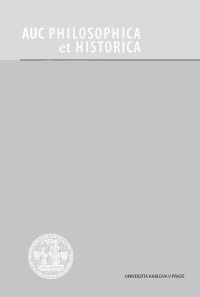We kindly inform you that, as long as the subject affiliation of our 300.000+ articles is in progress, you might get unsufficient or no results on your third level or second level search. In this case, please broaden your search criteria.

The article deals with the historical development of theoretical and methodological approaches to the concept of ‘space’. The emphasis is put on the relationship between historiography and ‘spatial disciplines’ (geography, philosophy) producing spatial discourses. Both in public and professional meaning, topics concerning space are only rarely associated with historiography and historical analysis. Spatial dimensions of historical processes are usually overshadowed by chronological aspects of historical development. In historiography, time predominates in the relationship between two basic (meta)physical constants of human life (time, space). However, the spatial turn and its impact on historiography increased the attention paid to the role of space. The article offers a typology of possible interconnections between historiography and space. The first type is represented by geographical determinism – the historical development is influenced by nature predispositions and it’s perceived as a result of interaction between mankind and its geographical surroundings. The second type is concentrated to the human perception of space in the course of history – the space is not only physically given fact, but also symbolic entity and social construction. This approach has predominated since the onset of the cultural turn in social sciences. The third type is linked to the field of historical methodology. The geographical extension, spatial delimitation and borders of historical phenomena represent the basic questions – the outcomes of research depend on the applied geographical scale. The analysis of single historical process researched within different spatial units (civilization, state, region) can lead to divergent results. Despite the prevailing emphasis put on the symbolic aspects of space (type 2), the future conceptual development is questionable. The historical research of space as social construction can’t be performed without the attention paid to the historical dynamics and transformations of physical and geographical space.
More...
The chapter is focused on cultural differences in spatial dimension. The principal question is whether Central Eastern Europe was perceived by early English travellers as culturally different and in what terms. As for the methodology, the author is using the term of “culturally different space”. Also, labelling the area as “Central Eastern Europe” is questioned and the meaning of it in the chapter is explained. Besides, the esthetical values in perception of landscape are discussed. All in all, the most attention is paid to textual analysis of the seventeenth and eighteenth century travel writings in regard to perception of cultural differences in the area of Central Eastern Europe, such as stoves, feather-beds, or even worse, straw to lie on and other images of inconvenience and discomfort. Further, the images of female beauty and its varieties are analysed in terms of cultural differences.
More...
The Romanian "outlaws" (read thieves), the equivalent of Bonnie and Clyde: Ghiţă and Crina were operating in Germany.
More...
Writers about the personality and work of H.-R. Patapievici.
More...
Ion Pop: - Ion Muresan translated in French; Sanda Cordos: - Radu Mares.
More...
The Round Table of The Philosophers of Slav Countries (30 V 2003)
More...
